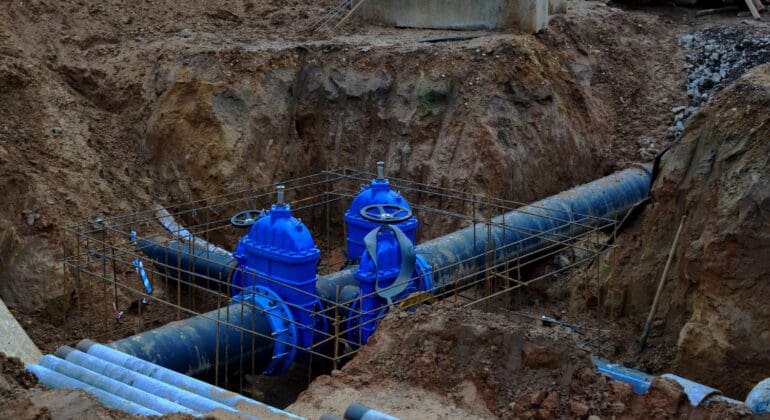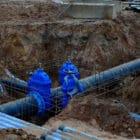Advancements in construction and civil engineering have led to innovative solutions that promise to lessen environmental footprints. Among these groundbreaking technologies, trenchless technology stands out as a remarkable approach to underground utility installation and repair. Without the need for extensive digging, trenchless methods minimize environmental disruption and promote sustainability. This blog post delves into the environmental benefits of trenchless technology, exploring how it preserves ecosystems, conserves resources, and leads us toward a more sustainable future.
Preserving Natural Landscapes
One of the most significant advantages of trenchless technology is its ability to preserve natural landscapes. Traditional methods often require extensive digging, which disrupts the earth and damages plant life. This destruction can take decades to repair, leaving scars on the landscape that have lasting environmental consequences.
In contrast, trenchless methods such as Horizontal Directional Drilling (HDD) and Pipe Bursting involve minimal surface disturbance. These techniques allow engineers to install or repair pipelines without digging up large tracts of land. As a result, trees, plants, and other vegetation remain largely undisturbed, maintaining the natural beauty and ecological balance of the area.
Protecting Wildlife and Habitats
Wildlife faces significant threats from construction activities, particularly due to habitat destruction and noise pollution. Traditional trench-digging methods often force animals to flee from their habitats, sometimes leading to loss of life or migration stress. Moreover, the noise from heavy machinery can have detrimental effects on both terrestrial and aquatic life.
Trenchless technology, by minimizing surface disruption and noise pollution, helps protect wildlife and their habitats. Since these methods do not require extensive excavation, they reduce the risk of disturbing animal habitats. Consequently, the local fauna can continue to thrive, contributing to biodiversity and ecological stability.
Reducing Soil Erosion and Sedimentation
Soil erosion and sedimentation are critical environmental issues associated with extensive digging. When soil is disturbed, it becomes susceptible to erosion by wind and water. This not only degrades the quality of the land but also contributes to sedimentation in nearby water bodies, affecting aquatic ecosystems.
Trenchless technology minimizes soil disturbance, thereby reducing the risk of erosion and sedimentation. Techniques such as Cured-In-Place Pipe (CIPP) lining allow for the repair of existing pipelines without digging up the surrounding soil. This preservation of topsoil structure helps maintain soil health and protects nearby water bodies from sedimentation, ensuring cleaner and healthier aquatic environments.
Conserving Water Resources
Water is an invaluable resource that requires careful management, especially in the face of climate change. Traditional pipeline installation and repair methods often lead to water wastage through leaks and inefficient processes. Furthermore, the excavation and reinstatement of the land can impact groundwater and surface water systems, leading to contamination and depletion.
Trenchless methods are more efficient and precise, reducing the likelihood of water wastage and contamination. For instance, the pipe bursting method allows for the seamless replacement of old pipes with minimal disruption to the surrounding environment. By conserving water resources and protecting water quality, trenchless technology serves as a sustainable solution that aligns with environmental conservation goals.
Reducing Carbon Footprint
Construction and excavation activities are significant contributors to carbon emissions. The use of heavy machinery and the transportation of materials result in substantial greenhouse gas emissions, contributing to climate change. Trenchless technology, however, significantly reduces the carbon footprint associated with underground utility work.
Since trenchless methods require less excavation, they use less heavy machinery and fewer resources. Techniques like HDD allow for precise drilling, reducing the need for extensive transportation of materials. This results in lower fuel consumption and fewer carbon emissions. By adopting trenchless technology, we can reduce the carbon footprint of construction activities and contribute to global efforts to combat climate change.
Sustainable Urban Development
Urban areas face unique challenges when it comes to utility installation and maintenance. Traditional methods often disrupt traffic, damage existing infrastructure, and create noise and air pollution, affecting the quality of life for residents. Sustainable urban development requires solutions that minimize these disruptions while maintaining the efficiency of utility services.
Trenchless technology offers a sustainable alternative for urban development. Techniques such as Microtunneling and Pipe Ramming allow for the installation of utilities without disturbing the surface infrastructure. This minimizes traffic disruptions and reduces noise and air pollution, making urban areas more livable and sustainable. By integrating trenchless methods into urban planning, cities can achieve sustainable development goals while maintaining essential utility services.
Cost-Effectiveness and Efficiency
Environmental benefits are often linked to cost-effectiveness and efficiency. Trenchless technology is not only environmentally friendly but also cost-effective in the long run. Traditional methods involve extensive digging, which requires more labor, materials, and time. These factors contribute to higher costs and longer project timelines.
In contrast, trenchless methods are more efficient, with shorter project timelines and reduced labor and material costs. For instance, pipe relining techniques can rehabilitate existing pipelines without the need for excavation, saving both time and money. The cost savings achieved through trenchless technology can be reinvested in further environmental conservation efforts, creating a positive feedback loop that promotes sustainability.
Future Prospects and Innovations
The future of trenchless technology holds exciting prospects for further environmental benefits. Continuous research and development in this field are leading to new methods and materials that enhance the sustainability of underground utility work. Innovations such as eco-friendly drilling fluids and advanced remote monitoring systems are set to revolutionize the industry.
Moreover, the integration of trenchless technology with renewable energy sources can further enhance its environmental benefits. For instance, solar-powered drilling rigs and electric machinery can reduce reliance on fossil fuels, further minimizing the carbon footprint of construction activities. The ongoing evolution of trenchless technology promises to deliver even greater environmental benefits, making it a cornerstone of sustainable infrastructure development.
By and Large
Trenchless technology offers a multitude of environmental benefits that make it a superior choice for underground utility installation and repair. By preserving natural landscapes, protecting wildlife habitats, reducing soil erosion, conserving water resources, and minimizing the carbon footprint, trenchless methods promote sustainability and environmental conservation. Furthermore, their application in urban development and future innovations hold great promise for creating a more sustainable and eco-friendly world. As we continue to prioritize environmental conservation, embracing trenchless technology will be a crucial step toward achieving our sustainability goals.





